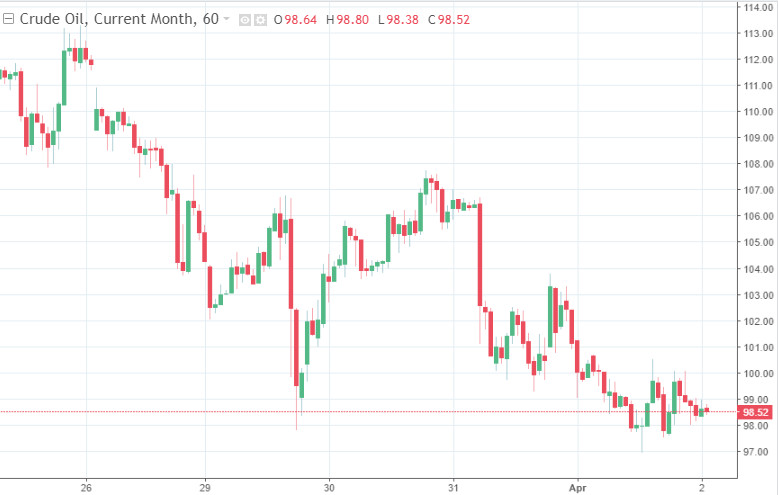World prices for black gold showed a decline on Friday evening. At one point the price of May futures for Brent crude oil sank by 0.02% to $104.69 per barrel, and May futures for WTI crude oil – by 0.81% to $99.47 per barrel.

Last March, Brent crude oil increased in price by 6.9%, and WTI – by 4.8%. At the same time, in the first quarter of this year, the cost of a barrel of leading brands increased by 39% and 33%, respectively.
Throughout the day on Friday, the commodity market shows a steady negative, while the situation on it remains far from the spectacular collapse of oil prices the day before. The reason for the noticeable negative dynamics on Thursday was US President Joe Biden's statement that America plans to release an average of 1 million barrels of black gold from the country's strategic reserves every day over the next six months.
Speaking at the White House, Biden called on American companies to actively increase oil production in order to reduce the cost of raw materials. This will reduce the role of Russian energy exports, he said.

Commenting on Biden's speech, market experts called his decision a "temporary measure" that could limit the spring rise in prices for oil. At the same time, analysts stressed that the conflict in eastern Europe has a decisive impact on the raw materials market, where the prospect of oil loss from Russia remains the most important problem.
Following the news that eased fears of a shortage in the market, the price of Brent crude oil instantly fell by 6%, and WTI – by 7%. At the same time, analysts of one of the world's largest investment banks Goldman Sachs on Thursday lowered the forecast for the cost of Brent crude oil for the second half of this year by $10 per barrel to $125 per barrel.
The permanent strengthening of the US currency exerts additional pressure on oil quotes on Friday. So, during the day, the dollar index increased by 0.33% to 98.64 points. Most often, the rising dollar makes raw materials less accessible to holders of alternative currencies.
In addition, today oil market participants analyze the weekly statistics of the American oil and gas company Baker Hughes on the number of operating oil drilling rigs in the United States. According to the company, in the week to April 1, their number increased by two – up to 533.
 English
English 
 Русский
Русский Bahasa Indonesia
Bahasa Indonesia Bahasa Malay
Bahasa Malay ไทย
ไทย Español
Español Deutsch
Deutsch Български
Български Français
Français Tiếng Việt
Tiếng Việt 中文
中文 বাংলা
বাংলা हिन्दी
हिन्दी Čeština
Čeština Українська
Українська Română
Română

